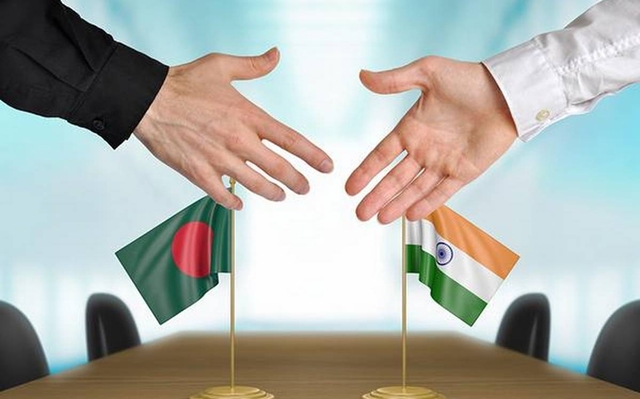SAM
Published:2019-10-05 21:55:20 BdST
Indian textile lobby presses for NTBs
FT ONLINE
The Indian textile lobby is pressing its government to impose fresh non-tariff barriers on Bangladesh's apparel exports against the backdrop of rising shipment to the neighboring country, officials said.
The pressure came at a time when readymade garment exports to India clocked a 79 percent growth to $500 million during the fiscal year 2018-19 from $278.67 million a year earlier.
Riding on the big jump in apparel shipments, Bangladesh's overall exports to India crossed the billion-dollar mark last fiscal reaching $1.25 billion from $873 million the year before.
The Indian industry is "raising voice with their government" to put some conditions (non-tariff barriers) on Bangladesh, like using indigenous materials -- the condition of rules of origin, Bangladesh High Commission in New Delhi wrote in a recent letter to the commerce ministry.
Since November 2011, Bangladesh's exports to India have been enjoying duty-free and quota-free (DFQF) market access under the South Asian Free Trade Area agreement as a member of the regional treaty.
The letter noted that the Indian garment manufacturers, having faced an increasing threat from the import of garments from Bangladesh, are blaming the duty-free market access facility for "damaging their local industry."
Since the Safta rules do not allow re-imposing direct tariffs, the Indian apparel makers are lobbying with their government to create non-tariff barriers to restrict Bangladesh's export there, according to the letter.
The Indian garment manufacturers have long been accusing Bangladesh of using "cheap" Chinese fabric to make clothing.
They are also suggesting their government ensure that Bangladesh sources a part of its fabric requirement from India, the letter said.
The high commission termed the Indian garment lobby "powerful" and suggested being "watchful" about what happens in the future.
That could help avoid disruption in the momentum of garments shipment growth in India, it noted.
Statistics show that the Indian domestic apparel market has been expanding at an average rate of 10 percent since 2005 and reached $76.22 billion in 2018.
President of the Clothing Manufacturers Association of India (CMAI) Rahul Mehta at a national garment fair last year said the domestic market is expected to rise by 12 percent from now on and reach nearly $160 billion by 2025.
Despite the duty-free market access, Bangladeshi manufacturers have long been accusing India of imposing various non-tariff and para-tariff barriers.
These include the imposition of the countervailing duty, non-acceptance of certificates issued by the Bangladesh Standards and Testing Institution, port restrictions on specific products, and delaying the release of goods in the name of value addition scrutiny.
A senior commerce ministry official said Bangladesh's garment export of half a billion-dollar is "very minuscule" compared with the Indian large domestic apparel market.
"It's a small pie in a big pond. India should not impose any more non-tariff barriers if it really wants to slash the massive trade gap," he said.
Former president of the Dhaka Chamber of Commerce and Industry Abul Kasem Khan had said earlier India is a big trading partner of Bangladesh and the balance of trade is highly tilted towards New Delhi.
Saying that Bangladesh's total export to India is merely a billion-dollar, he warned: "If India creates new obstacles, our export to there will fall and push up the trade gap further."
Unauthorized use or reproduction of The Finance Today content for commercial purposes is strictly prohibited.


